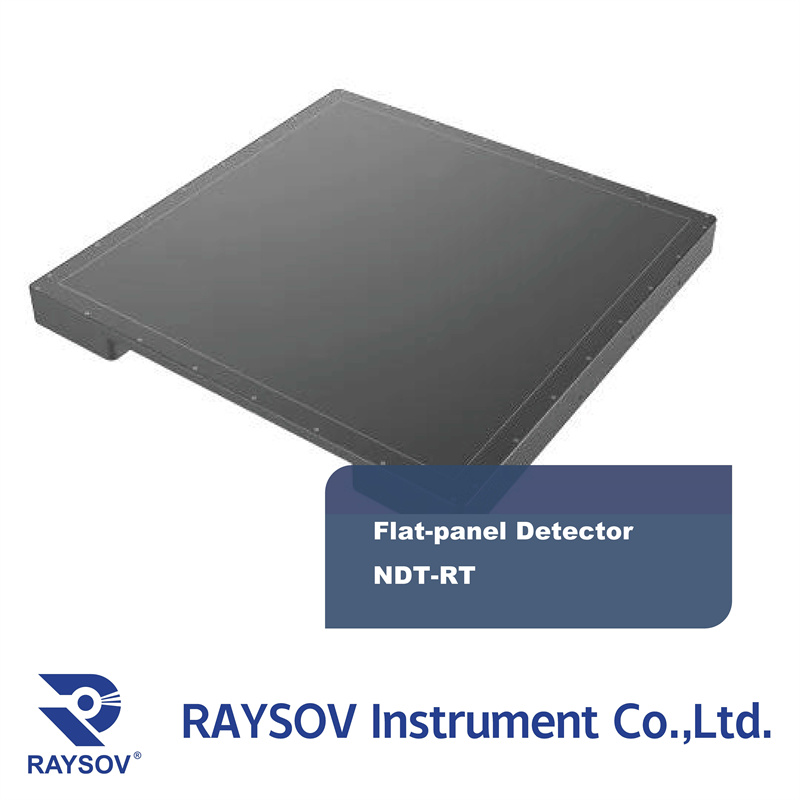How to choose a suitable Flat-panel X-ray detector

Flat panel detector (FPD) is an X-ray imaging device widely used in industrial 2D/3D inspection systems (such as X-ray digital imaging systems,Industrial CT scanners, etc.), nondestructive testing and scientific research. Its main technical indicators include the following aspects:
1. Spatial Resolution: Spatial resolution is the ability of a flat panel detector to clearly resolve details in an image. It is generally expressed in terms of pixel size (Pixel Pitch) or line pairs quantity per millimeter (Line-pairs per millimeter, lp/mm). Importance: High spatial resolution can provide clearer, more accurate images, suitable for applications that require high-precision imaging.
2. Sensitivity: Sensitivity is the ability of a detector to respond to rays or signals. It is usually expressed as the output signal intensity per unit input radiation. Importance: Higher sensitivity ensures clear images even under low radiation conditions, thereby reducing the radiation dose to the test object, which is particularly important in real-time imaging.
3. Dynamic Range: Dynamic range is the range between the largest and smallest signals that a detector can effectively record, usually expressed in “dB”. Importance: A larger dynamic range allows capturing more detailed differences in brightness within the image, ensuring that the image can be effectively displayed under different brightness conditions, avoiding overexposure or loss of detail in the image.
4. Signal-to-Noise Ratio (SNR): The signal-to-noise ratio refers to the ratio of signal to noise in an image. The stronger the signal and the smaller the noise, the better the image quality. Importance: High signal-to-noise ratio can reduce the noise spots in the image, making the image clearer and easier to diagnose or analyze.
5. Sampling Rate: Sample rate refers to the number of pixels per unit area of the detector, usually expressed as how many pixels per inch (PPI). Importance: The sampling rate directly affects the spatial resolution of the detector. A higher sampling rate can improve the detail representation ability of the image.
6. Pixel Size Definition: Pixel size refers to the actual physical size of a single pixel. It determines the spatial resolution of the flat panel detector, usually expressed in microns (µm). Importance: Smaller pixel size can improve the spatial resolution of the detector, making the image more delicate.
7. Response Time: Response time is the time required for the detector to output an image from the receipt of a radiation signal. Importance: Short response times contribute to faster imaging speeds, which is particularly crucial in dynamic or real-time imaging.
8. Exposure Latitude: Exposure tolerance is the ability of a flat panel detector to achieve good image quality within a certain range of radiation. Importance: Higher exposure tolerance ensures that image quality is not significantly affected at different radiation intensities, thereby enhancing the system's adaptability and stability.
9. Radiation Dose: The radiation dose that a flat panel detector requires during the imaging process. It is usually related to the system's sensitivity, dynamic range, and noise level.
10. Thickness and Weight: The physical dimensions of the flat panel detector, including its thickness and weight. Importance: For portable devices or detectors that need to be installed in different devices, a lighter and thinner design helps enhance the ease of use and compatibility of the device.
11. Durability: Flat panel detector maintains its performance stability, impact resistance, radiation resistance and other capabilities in long-term use. Importance: High durability can reduce the frequency of maintenance and equipment failure, extending the lifespan of equipment. These technical indicators are important references for selecting and evaluating flat panel detectors. Different technical indicators may have different priorities based on different industrial nondestructive testing application scenarios.

